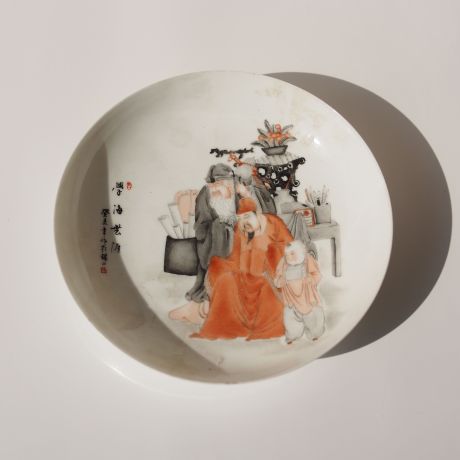

W120xL120mm, China
Calcite alabaster is known as commonly as the Han Jade as this type of white marble was used for fine architectural carving since the Han dynasty. This pair of alabaster plates would have been used as part of the utensils for serving tea outdoor. Carving on top of the plates are flowers of the 4 seasons; Narcissus, Lotus, Chrysanthemum, Plum Blossom.
On the other corners are verses taken from the draft letter from the calligrapher Yan Zhen Qing to corrupt general Guo Ying Yi in 764 AD. This draft letter is famous for the caoshu calligraphy and is learnt by younger calligraphers as the “争座位帖” (Zheng Zuo Wei Tie – The Struggle For a Seat). In this letter of criticism towards the general, the calligrapher concentrate more on his wording and thoughts rather than the calligraphy itself, however his emotion was naturally expressed in the strokes.

… 岂不以才为世出,功冠一时。挫思明跋扈之师,抗回纥无(?)之请,故得身凌烟之阁,名藏太室之庭,吁足畏也!然美则美矣,而终之始难。故曰:满而不溢,所以长守富也,高而不危,所以长守贵也,可不儆惧乎?!…
“故得身画凌烟之阁,名藏太室之廷”
Having a portrait at the hall of fame, the name recorded in palace
From the book of “Xiao Jing” (Classic of Filial Piety)
孝经 – “高而不危,所以长守贵也。
满而不溢,所以长守富也”
Dwelling on high but without peril, nobility can be preserved.
Being affluent but not wasteful, wealth can be preserved.
From the book of (Chinese Code of Success, a classic and not one of those self help book)
朱子治家格言 – “讀書志在聖賢,(非徒科第);為官心存君國,(豈計身家)?”
To study with the aspiration to be a man of virtue (and not for official ranking).
An official ought to have the interests of the Emperor and the nation at heart (and not his own pocket).













